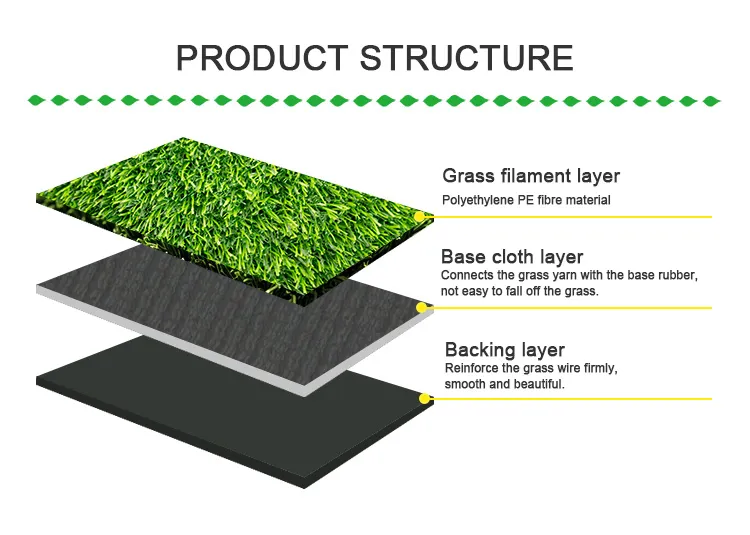
- Afrikaans
- Arabic
- Belarusian
- Bengali
- Czech
- Danish
- Dutch
- English
- Esperanto
- Estonian
- Finnish
- French
- German
- Greek
- Hindi
- Hungarian
- Icelandic
- Indonesian
- irish
- Italian
- Japanese
- kazakh
- Rwandese
- Korean
- Kyrgyz
- Lao
- Latin
- Latvian
- Malay
- Mongolian
- Myanmar
- Norwegian
- Persian
- Polish
- Portuguese
- Romanian
- Russian
- Serbian
- Spanish
- Swedish
- Tagalog
- Tajik
- Thai
- Turkish
- Turkmen
- Ukrainian
- Urdu
- Uighur
- Uzbek
- Vietnamese
new turf football field
Nov . 19, 2024 06:50 Back to list
The Evolution of New Turf Football Fields Enhancing the Game Experience
In recent years, the world of sports has seen significant advancements in field technology, particularly in football. The introduction of new turf football fields has transformed how the game is played, offering enhanced performance, durability, and safety for players. This article explores the evolution of artificial turf, its benefits, and its impact on the future of football.
The Evolution of Turf Technology
Artificial turf was first introduced in the 1960s, initially designed for use in indoor settings to provide a durable playing surface. The original turfs were made from nylon fibers, which were hard and abrasive, resulting in injuries and complaints from players. However, as the demand for outdoor playing surfaces increased, manufacturers began to innovate.
By the 1990s, advancements in materials led to the development of more sophisticated turf systems. New types of synthetic fibers, backed with better shock-absorbent materials, emerged, providing a more natural look and feel. Today's football fields utilize a combination of polyethylene and polypropylene fibers, allowing for a grass-like appearance while ensuring players' safety during gameplay.
Benefits of New Turf Football Fields
1. Consistent Playing Conditions Natural grass fields can suffer from wear and tear, leading to inconsistent playing surfaces. Artificial turf, however, provides uniformity, allowing for consistent playing conditions regardless of weather or foot traffic. This consistency is crucial for performance, enabling players to execute their skills effectively.
2. Durability and Maintenance One of the primary advantages of new turf fields is their durability. Unlike natural grass, which requires frequent watering, mowing, and reseeding, synthetic turf can endure heavy use without deterioration. This significantly reduces maintenance costs and allows schools and communities to allocate their resources to other areas.
new turf football field

3. Increased Playability With new turf technology, football fields can be used year-round with minimal downtime. This increased playability means that players can train and compete more often, thus enhancing their skills and overall performance. Furthermore, artificial surfaces can be designed to drain water quickly, allowing games to continue even after heavy rain.
4. Safety Considerations Safety is a primary concern in any sport, and new turf fields address this issue effectively. Modern artificial turf systems often include shock pads that absorb impact, reducing the risk of injuries such as concussions and knee problems. Furthermore, the materials used in contemporary turfs are designed to minimize abrasions, providing a safer environment for athletes.
Environmental Considerations
While new turf fields offer many benefits, they also raise environmental concerns. The production and disposal of synthetic materials pose ecological challenges, leading to increased scrutiny from environmentalists and sports associations. However, many manufacturers are now focusing on sustainability, creating turfs made from recycled materials and developing systems that can be easily recycled at the end of their lifecycle.
The Future of Football Fields
As technology continues to evolve, the future of turf football fields looks promising. Innovations such as integrated sensors for monitoring player performance and health are on the horizon, potentially revolutionizing how coaches train their teams. Furthermore, as the demand for eco-friendly options increases, the development of more sustainable turf solutions will likely become a focal point for manufacturers.
In conclusion, new turf football fields represent a significant advancement in the sport. They provide consistent playing conditions, reduce maintenance costs, and enhance player safety. While environmental concerns remain important, the industry's shift towards sustainable practices indicates a commitment to addressing these challenges. As technology progresses, we can expect turf fields to continue evolving, impacting how the game of football is played now and in the future. The ongoing dialogue between players, coaches, manufacturers, and environmental advocates will shape a landscape where football can thrive in harmony with nature.
-
The Benefits of Artificial Turf for Indoors
NewsJul.15,2025
-
How Artificial Grass Suppliers Ensure Quality Products
NewsJul.15,2025
-
Artificial Grass and Pets: A Space for Relaxation
NewsJul.08,2025
-
Balcony & Outdoor Decoration with Artificial Grass
NewsJul.08,2025
-
Best Indoor Artificial Grass for Home
NewsJul.07,2025
-
Best Pet Turf for Dogs: Safe & Durable Artificial Grass Options
NewsJul.07,2025
Products categories









